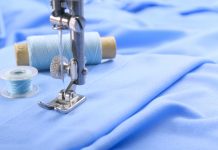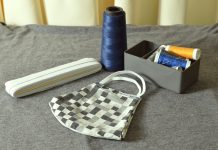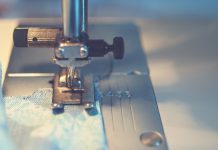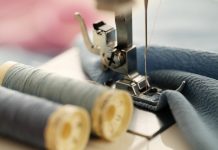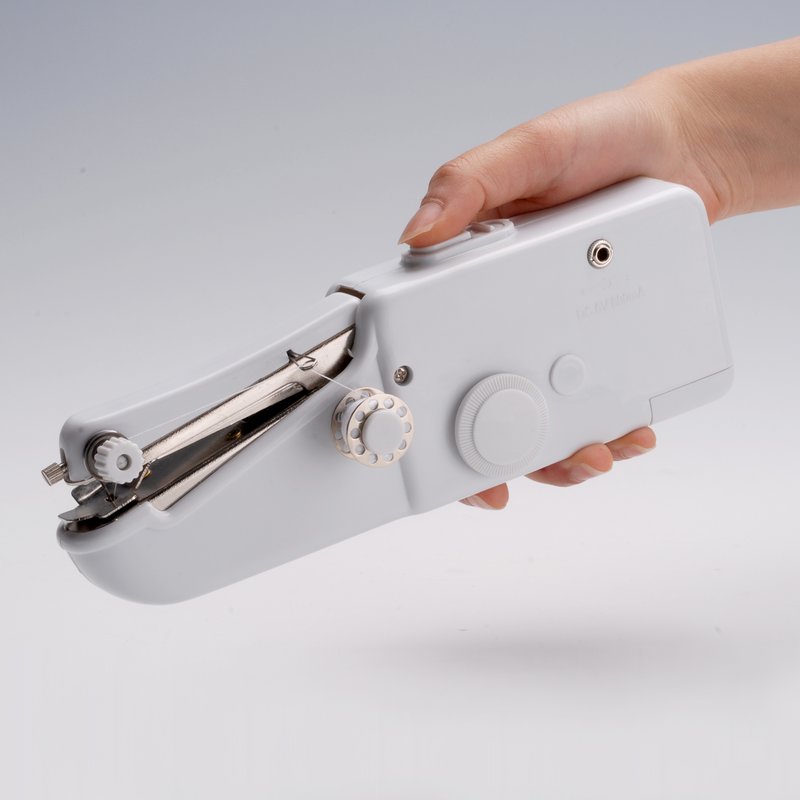When it comes to finding the perfect sewing machine for your needs, one of the first things you should understand is the difference between industrial and domestic sewing machines.
There are many different sewing machines available today, so it is understandable why there is so much confusion about how they differ. When it comes to sorting out the different types of sewing machines, they break down into two main groups – industrial sewing machines and domestic sewing machines.
Those two types divide into several smaller groups, but we’re going to break down the two main categories and explain the differences between them.
 The Differences Between Industrial and Domestic Sewing Machines
The Differences Between Industrial and Domestic Sewing Machines
As you may have guessed, we classify sewing machines according to the particular sewing tasks they perform.
As the name suggests, domestic sewing machines are for domestic use and small-scale sewing tasks. On the other hand, industrial or commercial sewing machine are for more frequent use in a commercial setting.
To help explain the differences between these two types of machines, we will be taking a thorough look at each below.
Domestic Sewing Machines
Domestic sewing machines are for versatility and casual use. They are for homeowners who want a machine that’s reliable and easy to use.
Versatility:
Whether you want to take a shot at sewing a homemade Halloween costume for the kids, or you have mending and hemming tasks to complete, a domestic sewing machine should be up to the task. The wide variety of sewing tasks they can handle will differ from one brand of domestic sewing machine to the next, but their main selling point is their flexible nature.
Not only can domestic sewing machines handle a wide variety of sewing tasks, but they are also adaptable when it comes to accommodating various types of fabric. While they are rarely powerful enough to work on heavy and thick materials, they can handle most of the fabrics that you would expect to encounter in a residential setting.
Even the simplest of domestic sewing machines will usually feature several stitching options. Some will come with as many as 100 different settings, which provide the operator with an incredible amount of flexibility to tackle any sewing project.
Affordability:
While the overall price will depend heavily on the particular brand, another advantage of domestic sewing machines is their affordability. Domestic sewing machines are usually available at a price point that makes them a practical purchase for most people. Many people will find they can save money by purchasing a domestic sewing machine rather than paying for minor clothing alterations and hemming tasks.
Performance:
In terms of their performance, sewing speed, and operation, most domestic sewing machines tolerate no more than a few hours of use per day. For this reason, they tend to have much smaller motors than the more powerful industrial sewing machines. While their motors are powerful enough for most domestic tasks, the decreased power can mean that the stitch quality will almost certainly be less impressive than those achieved with an industrial sewing machine.
While decreased power may sound like a negative quality in a sewing machine, the slower running speed can be advantageous in many situations. For starters, the slower pace makes for a more comfortable and relaxing sewing experience. The slower pace and reduced power make domestic machines much easier to use for less experienced sewing enthusiasts.
Maintenance Requirements:
Most domestic sewing machines, especially higher-end ones, require very little in the way of maintenance. Unlike the sewing machines of the past, current domestic sewing machines usually have their built-in oiling system.
If they do require repairs, the parts and service are almost always affordable and widely available. Most brands will also back their machines with warranties, which protect the owner in the event of a mechanical issue.
Industrial Sewing Machines
As you would assume, industrial sewing machines are used in commercial settings. They tend to be much larger than domestic sewing machines, and they are made to perform a particular task most efficiently and professionally possible.
Speed and Consistency:
Because most industrial sewing machines accomplish specific tasks quickly and with professional quality, they tend to operate at much higher speeds than domestic sewing machines.
They achieve these fast speeds and professional-quality stitches because they feature powerful external motors and durable sewing machine parts. Essentially, these sewing machines are manufacturing workhorses. They can operate at the same high speed and produce consistent results throughout an entire workday.
Unfortunately, due to their industrial use and the incredible volume of thread and fabric that goes through them, they need regular maintenance. In particular, industrial machines need to be cleaned and oiled more frequently than domestic sewing machines, but this is not a surprise given how much harder they work.
Cost:
While industrial sewing machines certainly cost much more than a standard domestic sewing machine, they are often purchased more as an investment and industrial tool and not something to be used for a hobby.
They produce professional-level results at a rapid pace, which saves time and money in industrial settings. In that sense, the higher cost of industrial sewing machines needs put into context. Using a domestic sewing machine in an industrial setting would be a waste of time and effort, which would end up costing more in the long run.
The Overall Differences
Both types of sewing machines have their advantages and disadvantages. The main thing to keep in mind when choosing a sewing machine is the type of tasks you are doing.
While industrial sewing machines are powerful, reliable, and usually produce a much higher quality stitch, they are expensive and often designed to complete one particular task. On the other hand, domestic sewing machines are versatile, affordable, and require little maintenance, but they are much slower and rarely provide the user with professional-level stitching.

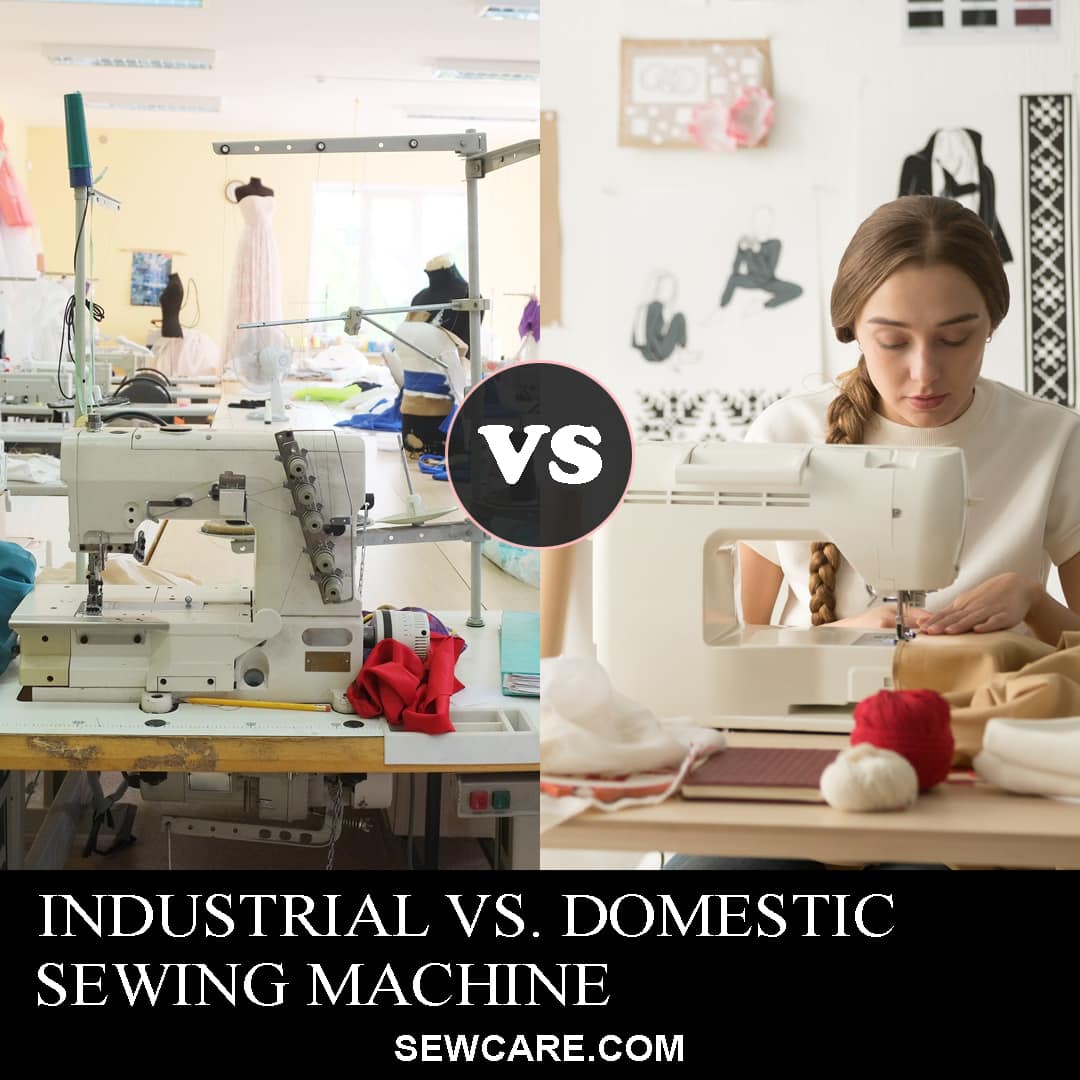 The Differences Between Industrial and Domestic Sewing Machines
The Differences Between Industrial and Domestic Sewing Machines